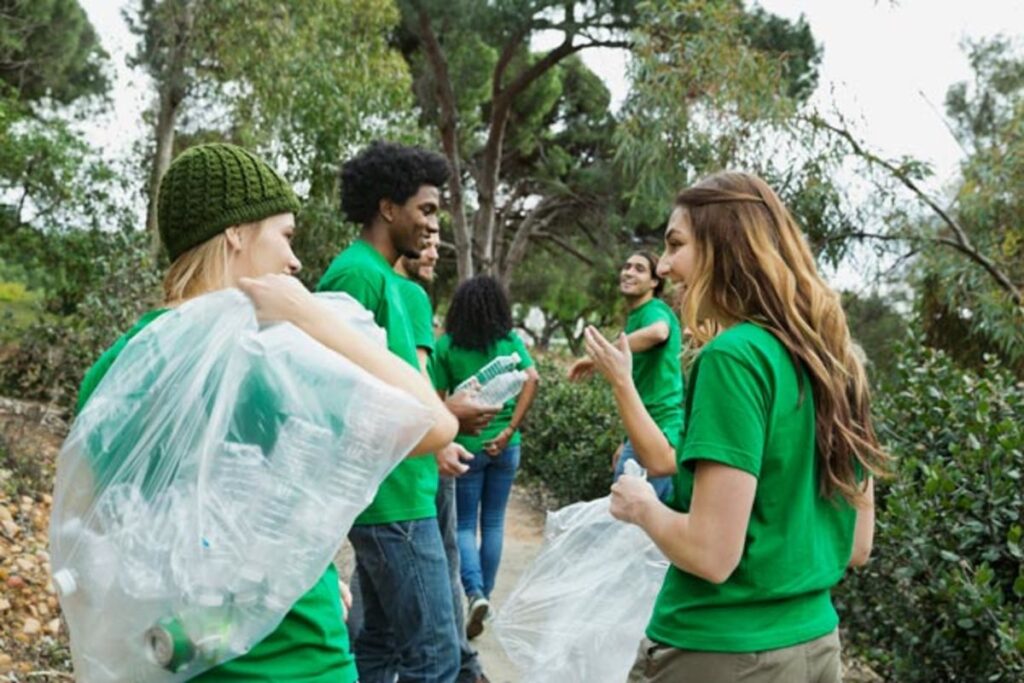Reduce, Reuse, and Recycle are the three R’s for the global textile sector to survive the strict environmental legislation. There has always been a long debate over which one is more effective. However, from the environmental perspective, any of these is positive. A new life-cycle assessment (LCA) commissioned by the European textile reuse and recycling industry (EURIC) has confirmed the significant carbon dioxide (CO2) and water savings of reusing textiles compared to producing new clothing. The study found that the environmental impact of reusing textiles is 70 times lower, even when accounting for global exports for Reuse, including transport emissions. The study revealed that a massive 3 kilograms of CO2 are saved for each high/medium-quality clothing item that is reused, while only 0.01% of the water used to produce new clothing is required for Reuse. These results come on the heels of the European Union (EU) launching its Strategy for Sustainable Textiles just a few months ago and requirements for Member States to start collecting textiles separately by 2025.
On the other hand, the textile waste or unwanted clothes to destinations outside the EU has steadily increased, and this export reached 1.4 million tonnes in 2021. Around 2.1 million tonnes of post-consumer clothing and home textiles are collected in the EU annually for recycling or sale on global reuse markets. This represents around 38% of textiles placed on the EU market, and the remaining get discarded in the mixed waste streams. Pakistan is one of the dumping grounds for post-consumer textile waste or unwanted clothes discarded annually from the EU. In 2021, used clothing worth 46 million USD export value was exported from the EU to Pakistan. Used clothes from the EU’s high streets end up reaching resale markets and dumping sites in the country.
The current scenario indicates that some industries recycle imported used clothes, but the progress is not significant, and major portions of these clothes enter resale markets and dumping sites directly. For example, Karachi Export Processing Zone (KEPZ) greatly benefits from the used textile industry and recycles and resales imported used clothes globally. Given the preference for using recycled material in new clothes, if industries are channeled into the recycled fashion market, the recycling, and redesigning of imported and locally generated used clothes can become a significant business market for Pakistan. EU Strategy for Sustainable and Circular Textiles will enormously transform the textile production patterns in Pakistan. Driving fast fashion out of fashion by reversing overconsumption and overproduction is a major target of the strategy. The industry must adopt resource-efficient manufacturing processes and circular business models. This will promote the manufacturing of superior quality clothing and the recycling of secondhand clothes, thus causing a massive shift in the consumers’ preference towards recycled secondhand textile products.
Further this week, Accelerating Circularity has released a comprehensive directory of international recyclers aimed at improving connections within the textile value chain to boost textile-to-textile recycling. The comprehensive directory of textile recyclers includes the various commercial technologies for chemical and mechanical recycling of polyester and cellulosic. The catalog details the different aspects of each recycler, such as location, feedstock fiber type, restrictions, etc. Users can organize and filter the information in the Airtable platform so that certain criteria can be input and information extracted to allow the recyclers of specific capabilities to be pinpointed.
Further this week, Carbios successfully concluded the CE-PET1 project supported by the French State and operated by ADEME, which demonstrated the application of its PET recycling technology to textiles. The CE-PET project, which lasted four years, confirmed the enzymatic PET recycling process at the pilot stage to scale up to the industrial demonstrator – which has been operational since September 2021 – capable of processing plastic PET waste. The initial feasibility of the process, both environmentally and economically, has allowed moving further forward toward its industrialization.
The other major success of the CE-PET project was validating the technology on textile waste at a pilot scale, a considerable feat, as textiles represent about 60% of the global PET market. To date, PET bottles represent the main raw material used to manufacture recycled polyester fiber. Using Carbios’ technology on textile waste increases its application possibilities, especially because of new European regulations on the separate collection of textile waste, which will become mandatory from 1 January 2025
Further this week, Fashion for Good launched the Sorting for Circularity USA Project, a new initiative focused on the North-American textile-to-textile recycling market that will provide the most representative snapshot of textile waste composition generated in the United States. This effort is crucial to understanding and evaluating the business case for textile-to-textile recycling, ensuring that used textiles move to their best and highest end-use. The results of this 18-month project will inform decisions to unlock necessary investments and actions to scale collection, sorting, and recycling innovations.
Further, in sustainability, the EU has added major flame retardants to the European substance of very high concern list that drives a shift to a cleaner world and safer future. Being listed as an SVHC Chemical usually catalyzes the industry to quickly remove it from articles, even in advance of a process called Authorization, which is the complete banning of such chemicals in uses other than those specifically authorized by the regulator.





